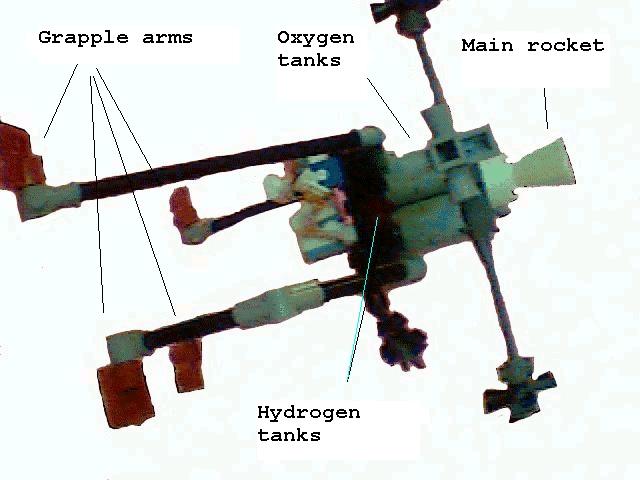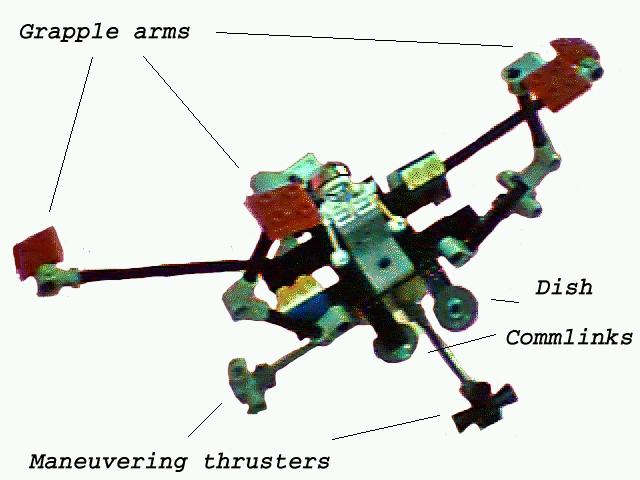

The orbital tug is perhaps the most common, yet least glamorous spacecraft. The shuttles slingships, fiercely clawing their way out of the gravity well, are dramatic, but never get higher than LEO, whereas most orbital activities, such as the space stations and spacedocks, take place at higher orbits. Enter the orbital tug.
The design of the orbital tug is basic, a main rocket engine, maneuvering engines, fuel tanks, a console for the pilot, and grappling arms to secure the cargo.

The orbital tug fulfills a great need by shuttling cargo from LEO to higher orbits. Less common uses are to transfer materials intra-orbitally, such as refined metals from asteroid mines to spacedocks. Finally, a small but growing amount of cargo consisting of specialty items manufactured in orbit and needed planetside. Typical cargoes include supplies, space station and space ship modules, bulk materials, and specialty items.
The orbital tug has three modes; manned, remote controlled, and autonomous. Manned is just what the word implies; the tug is actually piloted by an onboard pilot during it's flight. In remote controlled mode, the tug is remotely controlled, usually by a pilot on the ship being pushed by the tug. In autonomous mode, the OTV flies a preprogrammed route. Since the OTV has only limited AI capabilities, manned cargo is very rarely transferred in autonomous mode.